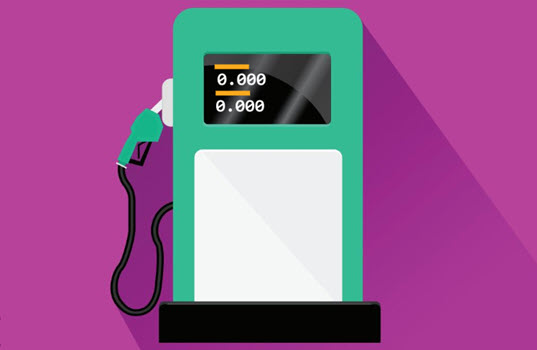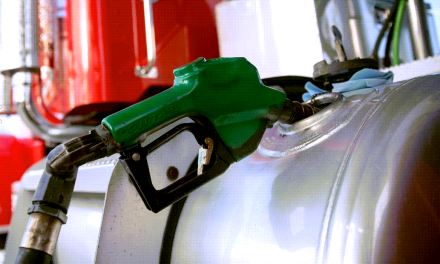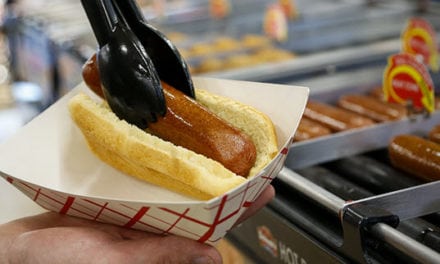By Brian Reynolds
There are some big-time money wasting bugaboos in our industry that can be avoided or at least minimized. So as the song goes from “The Sound of Music” here are a few “Favorite Things.”
Meter Loss
Virtually all retailers give away gasoline and don’t even know it. Fuel is a product that most people never see. It is a liquid that’s delivered via truck and unloaded via a big black hose. It’s dispensed through a smaller black hose having been converted from cubic inches to dollars and gallons. Customers can’t see how much is being dispensed and can only confirm dispensing occurred by way of a gas gauge in their vehicles that only represents percentages of full or empty without exact confirmation to numeric values associated with the sale. Yet customers can claim they were cheated without any factual basis to make that claim!
Here are the statistics to keep in mind when it comes to how the metering/ dispensing process works.
- Fuel is dispensed and metered in cubic inches then converted to gallons and dollars
- There are 231 cubic inches in any one gallon of liquid • There are 1,155 cubic inches in any five gallons of liquid
- (231 cu. in. x 5 gallons = 1,155 cu. in.)
- Federal guidelines allow for meters/ totalizers to be “off” by as much as + or – six cubic inches per five gallons of product dispensed
- So, as a rule of thumb, the amount of slack allowed in a meter is ½%: o six cu. in. / 1,155 cu. in. = 0.0052 o 0.0052 x 100 = 0.52% or ½%
The government guidelines are focused on accuracy for sure and allow for an acceptable margin of error that more or less accommodates the mechanical variance of “meter drift,” allowing for a reasonable tolerance (+/- six cubic inches) for temperature. That is all well and good, but in today’s economy any variance much greater than zero has a significant financial penalty.
One cubic inch equals 0.004329 gallons. At $2 per gallon, a one cubic inch loss would mean that a 150,000-gallon per month gas station would suffer a $649 per month loss. That is just at one cubic inch of loss!
All meters are built to purposely vary to “greater than zero” for the customer’s benefit. The term “meter drift” sounds like it goes up then down then up then up then down etc., but that’s not the case. There are meters, such as the Wayne Xflo, that are precisely engineered, milled and assembled that provide a tolerance level closer to zero margin of error, as well as monitoring solutions that will issue an alert to test and possibly recalibrate the meter.
Slow-Pumping Dispensers
There can be many variables that influence how fast a dispenser is flowing. It could be the pump or a nozzle issue. Most likely it is the filter. The problem with a slow flow dispenser is that it really irritates customers. A customer is very likely to hold a grudge against not only the dispenser but the entire store and might not ever come back!
Historically, passing the information to the correct person for remedying a slow flow dispenser falls on the shoulders of a store clerk. Usually, by the time a store clerk is aware of a problem it is too late. It has probably been slow for a while. Who knows how many customers had a bad experience before someone complained, and who knows if any of them will be back?
Flow rates can be monitored and even forecasted weeks in advance, to determine the most cost-efficient time for filter changes. There also is no rule that says change all the filters at once at the same location. Monitoring solutions may suggest that for dispensers that are not used as often, there may still be several months of useful time left on an individual filter.
Down Dispensers
The biggest bugaboo of all is when a dispenser goes down. Machines do fail—it is inevitable. However, this seems to be one of the most difficult pieces of information to acquire for the person who can fix the problem.
How often do customers see an out-of-order cover on a nozzle, or, even worse, a giant trash sack covering up the entire dispenser? In today’s world, a gas lane also represents a parking spot. Many customers pump gas then go inside the store. Customers generally don’t park in an out-of-order stall. A busy c-store only has so many spots close to the front door, but customers who don’t need gas won’t park where there is an out-of-order sign. Even if that is the only spot on the lot and it is in the shade. So, bye-bye customer.
Believe it or not, there are monitoring solutions available that will indicate a dispenser is down. Technology is advanced to the point that many of the things that historically were passed off as the “cost of doing business” can today be monitored and remedied before it becomes a costly proposition.
A retailer’s favorite thing is making money. But making money and making a profit can be two different things. Doing things just slightly different can often mean the difference between profit and loss.
 Brian Reynolds began his career working as a teenager in his family-owned jobbership in Cisco, Texas, and was at the forefront of many significant industry milestones. Reynolds was an early adopter of cardlock systems in the 1980s, a pioneer of high-volume supermarket fueling centers in the 1990s and one of the key architects of inventing reward-based fueling loyalty in the 2000s. He currently works for Dover Fueling Solutions in ClearView, wet stock management sales.
Brian Reynolds began his career working as a teenager in his family-owned jobbership in Cisco, Texas, and was at the forefront of many significant industry milestones. Reynolds was an early adopter of cardlock systems in the 1980s, a pioneer of high-volume supermarket fueling centers in the 1990s and one of the key architects of inventing reward-based fueling loyalty in the 2000s. He currently works for Dover Fueling Solutions in ClearView, wet stock management sales.









